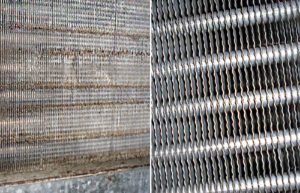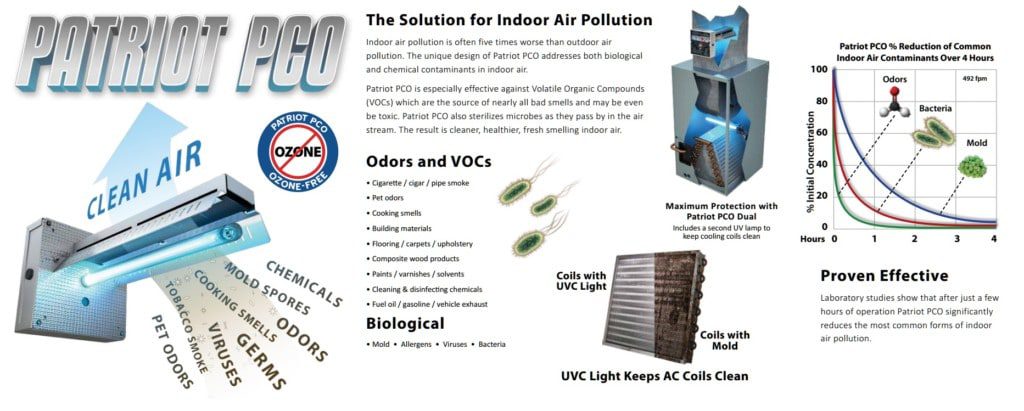When it comes to air pollution, many of us fail to recognize the dangers hiding in our own homes. The following information isn’t designed to scare you as much as it is to educate you on the particles in the air you breathe within your home that could be harmful.
Facts About Indoor Air Pollution
1. Indoor Air Can Be Up to 5 Times More Polluted Than Outdoor Air
According to the Environmental Protection Agency (EPA), indoor air can be up to five times more polluted than outdoor air. This is partly due to the fact that homes are becoming increasingly airtight, trapping pollutants inside. Additionally, many common household products, such as cleaners and air fresheners, can contribute to indoor air pollution.
![]()
Everyday Products Can Be a Major Source of Indoor Air Pollution
The Hidden Dangers in Your Cleaning Supplies
Many common household cleaners contain volatile organic compounds (VOCs) that can be harmful to your health. These chemicals can cause a range of symptoms, from headaches and dizziness to respiratory problems and even cancer. To minimize your exposure to these pollutants, opt for natural or low-VOC cleaning products whenever possible.

Fabrics Can Trap Pollutants and Allergens
The Unseen Threat in Your Carpets and Curtains
Carpets, upholstery, and curtains can trap dust, pet dander, and other allergens, which can aggravate asthma and allergy symptoms. These fabrics can also absorb VOCs from the air, releasing them back into your living space over time. Regular cleaning and vacuuming can help reduce the buildup of these pollutants.

Indoor Air Pollution Can Be Especially Harmful to Older Adults
As we age, our bodies become more susceptible to the effects of indoor air pollution. Older adults are more likely to have chronic health conditions, such as heart disease and respiratory problems, which can be exacerbated by poor indoor air quality. Additionally, many seniors spend more time indoors, increasing their exposure to pollutants.

People with Asthma Are More Vulnerable to Indoor Air Pollution
The Role of Indoor Air Quality in Asthma Management
For people with asthma, indoor air pollution can be particularly problematic. Exposure to pollutants like dust, pet dander, and chemical irritants can trigger asthma attacks and worsen symptoms. Studies have shown that improving indoor air quality can significantly reduce asthma symptoms and improve quality of life.
![]()
Heating Systems Can Contribute to Indoor Air Pollution
The Risks of Wood-Burning Fireplaces and Gas Furnaces
While heating systems are essential for keeping your home warm and comfortable, they can also contribute to indoor air pollution. Wood-burning fireplaces and gas furnaces can release pollutants like carbon monoxide, nitrogen dioxide, and particulate matter into the air, which can be harmful to your health. Regular maintenance and proper ventilation can help reduce these risks.
Air Fresheners and Candles Can Do More Harm Than Good
The Drawbacks of Artificial Scents
While air fresheners and scented candles may seem like an easy way to mask odors and improve the smell of your home, they can actually contribute to indoor air pollution. Many of these products contain VOCs and other chemicals that can be harmful to your health. Additionally, some people may be sensitive to the fragrances used in these products, experiencing headaches, dizziness, or respiratory irritation.

Indoor Air Quality Testing is Essential for Identifying Pollutants
The Benefits of Professional Air Quality Assessments
If you’re concerned about the air quality in your home, it’s essential to have it tested by a professional. Indoor air quality testing can help identify the specific pollutants present in your home and their concentrations, allowing you to take targeted steps to address the problem. Professional testing offers accurate results and personalized recommendations for improving your home’s air quality.
Ignoring Indoor Air Pollution Can Have Serious Long-Term Consequences
The Health Risks of Prolonged Exposure
While it may be tempting to put off addressing indoor air pollution, doing so can have serious consequences for your health and well-being. The longer you’re exposed to pollutants, the greater the risk of developing chronic health problems like asthma, COPD, and even cancer. Taking action to improve your home’s air quality is crucial for protecting your long-term health.

Ace Home Services Offers Expert Indoor Air Quality Testing in Phoenix
The Phoenix Indoor Air Environment Quality Test
If you’re a homeowner in Phoenix looking for professional indoor air quality testing, Ace Home Services has you covered. Their Phoenix Indoor Air Environment Quality Test is a comprehensive assessment that identifies a wide range of pollutants, including VOCs, particulate matter, carbon monoxide, mold, and other allergens. With over 25 years of experience serving the Phoenix area, Ace Home Services has the expertise to help you create a healthier, safer home environment.

The Hidden Dangers Lurking in Your Home
When it comes to air pollution, most people think of smoggy cities and industrial smokestacks. However, the air inside your home can be just as polluted, if not more so, than the air outside. In fact, according to the Environmental Protection Agency (EPA), indoor air can be up to five times more polluted than outdoor air. As a homeowner, it’s essential to be aware of the various sources of indoor air pollution and how they can affect your health and well-being.
Everyday Product Pollutants: The Surprising Culprits
Many common household products, such as cleaners, air fresheners, and personal care items, contain volatile organic compounds (VOCs) that can contribute to indoor air pollution. These chemicals can cause a range of health issues, from headaches and dizziness to respiratory problems and even cancer. To minimize your exposure to these pollutants, opt for natural or low-VOC products whenever possible.
The Dangers of Household Cleaners and Air Fresheners
Household cleaners and air fresheners are some of the most significant sources of VOCs in the home. Many of these products contain chemicals like formaldehyde, benzene, and ammonia, which can irritate the eyes, nose, and throat and cause respiratory problems. Some air fresheners also contain phthalates, which have been linked to hormonal disruptions and developmental issues in children.

Fabric Pollutants: The Unseen Threat
In addition to everyday products, the fabrics in your home can also contribute to indoor air pollution. Carpets, upholstery, and curtains can trap dust, pet dander, and other allergens, which can aggravate asthma and allergy symptoms. These fabrics can also absorb VOCs from the air, releasing them back into your living space over time.
How Fabrics Trap Pollutants
Fabrics are made up of tiny fibers that can easily trap dust, dirt, and other particles. Over time, these pollutants can accumulate, creating a breeding ground for bacteria, mold, and dust mites. When disturbed, these allergens can become airborne, triggering respiratory problems and other health issues.
Indoor Air vs. Outdoor Air: Which is Worse?
While outdoor air pollution is a significant concern, the air inside your home can be even more dangerous. According to the EPA, Americans spend around 90% of their time indoors, where pollutant levels can be two to five times higher than outdoors. This is partly due to the fact that homes are becoming increasingly airtight, trapping pollutants inside.
Comparison of Indoor and Outdoor Air Quality
While outdoor air pollution is more visible, with smog and haze often blanketing cities, indoor air pollution is much more insidious. Inside your home, pollutants can build up over time, creating a toxic environment that can lead to a range of health problems. In fact, the World Health Organization (WHO) estimates that indoor air pollution is responsible for 3.8 million premature deaths each year.
Aging Takes Its Toll: The Impact on Older Adults
As we age, our bodies become more susceptible to the effects of indoor air pollution. Older adults are more likely to have chronic health conditions, such as heart disease and respiratory problems, which can be exacerbated by poor indoor air quality. Additionally, many seniors spend more time indoors, increasing their exposure to pollutants.
The Risks for Older Adults
Exposure to indoor air pollution can have serious consequences for older adults. It can worsen existing health conditions, such as asthma and COPD, and increase the risk of heart attacks and strokes. In some cases, it can even lead to premature death. As such, it’s crucial for seniors to take steps to improve the air quality in their homes.

People with Asthma Often Suffer More: The Role of Indoor Air Pollution
For people with asthma, indoor air pollution can be particularly problematic. Asthma is a chronic lung condition that causes inflammation and narrowing of the airways, making it difficult to breathe. Exposure to pollutants like dust, pet dander, and chemical irritants can trigger asthma attacks and worsen symptoms.
The Impact on Asthma Patients
Studies have shown that indoor air pollution can have a significant impact on asthma patients. One study found that children living in homes with high levels of VOCs were four times more likely to develop asthma than those living in homes with low VOC levels. Another study found that exposure to secondhand smoke increased the risk of asthma in children by 20-30%.
Improving Air Quality in Your Home: Simple Steps to Take
Fortunately, there are several simple steps you can take to improve the air quality in your home. These include:
- Regularly cleaning and vacuuming to remove dust and allergens
- Using natural cleaning products and avoiding harsh chemicals
- Opening windows to allow fresh air to circulate
- Using air purifiers with HEPA filters to remove pollutants
- Avoiding smoking indoors and keeping pets out of bedrooms
The Benefits of Improved Indoor Air Quality
By taking steps to improve the air quality in your home, you can enjoy a range of benefits, including:
- Reduced allergy and asthma symptoms
- Improved respiratory health
- Better sleep quality
- Increased energy levels and overall well-being
Heating System Pollutants: The Hidden Danger
While heating systems are essential for keeping your home warm and comfortable, they can also contribute to indoor air pollution. Wood-burning fireplaces and gas furnaces can release pollutants like carbon monoxide, nitrogen dioxide, and particulate matter into the air, which can be harmful to your health.
The Risks of Wood-Burning Fireplaces and Gas Furnaces
Wood-burning fireplaces are a cozy addition to any home, but they can also be a significant source of indoor air pollution. Burning wood releases fine particulate matter, which can penetrate deep into the lungs and cause respiratory problems. Gas furnaces, on the other hand, can release carbon monoxide, a colorless, odorless gas that can be deadly in high concentrations.
Plug-in Air Fresheners Aren’t a Solution: The Drawbacks of Artificial Scents
While plug-in air fresheners and scented candles may seem like an easy way to mask odors and improve the smell of your home, they can actually contribute to indoor air pollution. Many of these products contain VOCs and other chemicals that can be harmful to your health.
The Disadvantages of Using Air Fresheners and Candles
In addition to releasing pollutants into the air, air fresheners and candles can also cause other problems. For example, some people may be sensitive to the fragrances used in these products, experiencing headaches, dizziness, or respiratory irritation. Additionally, scented candles can be a fire hazard if left unattended or placed too close to flammable objects.
It’s Time to Test: The Importance of Indoor Air Quality Testing
If you’re concerned about the air quality in your home, it’s essential to have it tested by a professional. Indoor air quality testing can help identify the specific pollutants present in your home and their concentrations, allowing you to take targeted steps to address the problem.
The Benefits of Professional Air Quality Testing
Professional air quality testing offers several benefits, including:
- Accurate identification of pollutants and their concentrations
- Personalized recommendations for improving air quality
- Peace of mind knowing that your home is safe and healthy
Procrastinating Makes Matters Worse: The Consequences of Ignoring Indoor Air Pollution
While it may be tempting to put off addressing indoor air pollution, doing so can have serious consequences for your health and well-being. The longer you’re exposed to pollutants, the greater the risk of developing chronic health problems like asthma, COPD, and even cancer.
The Long-Term Effects of Indoor Air Pollution
Exposure to indoor air pollution can have both short-term and long-term effects on your health. In the short term, you may experience symptoms like headaches, dizziness, and respiratory irritation. Over time, however, exposure to pollutants can lead to more serious health problems, such as:
- Asthma and other respiratory diseases
- Heart disease and stroke
- Cancer
- Neurological problems like Alzheimer’s and Parkinson’s disease
Who to Call for Indoor Air Quality Testing in Phoenix: Ace Home Services
If you’re a homeowner in Phoenix looking for professional indoor air quality testing, look no further than Ace Home Services. With their Phoenix Indoor Air Environment Quality Test, Ace Home Services can help identify the specific pollutants present in your home and provide personalized recommendations for improving your air quality.
Why Choose Ace Home Services?
Ace Home Services has been serving the Phoenix area for over 25 years, providing top-notch HVAC and plumbing services to homeowners throughout the valley. Their team of certified technicians has the knowledge and experience to accurately assess your home’s air quality and provide effective solutions for improving it.
The Phoenix Indoor Air Environment Quality Test
The Phoenix Indoor Air Environment Quality Test from Ace Home Services is a comprehensive assessment of your home’s air quality. Using state-of-the-art equipment, their technicians will test for a wide range of pollutants, including:
- VOCs
- Particulate matter
- Carbon monoxide
- Mold and other allergens
Based on the results of the test, Ace Home Services will provide you with a detailed report and personalized recommendations for improving your home’s air quality. Whether you need to install an air purifier, upgrade your HVAC system, or make other changes to your home, they’ll work with you to find the best solution for your needs and budget.
Taking Action to Protect Your Health and Well-Being
Indoor air pollution is a serious problem that can have significant impacts on your health and well-being. As a homeowner, it’s essential to be aware of the various sources of indoor air pollution and take steps to address them. Whether you’re dealing with everyday product pollutants, fabric pollutants, or heating system pollutants, there are simple steps you can take to improve the air quality in your home.
If you’re concerned about the air quality in your home, don’t wait to take action. Contact Ace Home Services today to schedule your Phoenix Indoor Air Environment Quality Test and start breathing easier. With their expert technicians and commitment to customer satisfaction, you can trust Ace Home Services to help you create a healthier, safer home environment for you and your family.
